Request Demo
Last update 13 Dec 2025

OpenAI OpCo LLC
Last update 13 Dec 2025
Overview
Related
100 Clinical Results associated with OpenAI OpCo LLC
Login to view more data
0 Patents (Medical) associated with OpenAI OpCo LLC
Login to view more data
2
Literatures (Medical) associated with OpenAI OpCo LLC01 Oct 2020·Ecology and evolutionQ2 · BIOLOGY
Improving the accessibility and transferability of machine learning algorithms for identification of animals in camera trap images: MLWIC2
Q2 · BIOLOGY
ArticleOA
Author: Raoul K. Boughton ; David W. Wolfson ; Jennifer Stenglein ; Kurt C. VerCauteren ; John Erb ; James C. Beasley ; Mohammad S. Norouzzadeh ; Amy J. Davis ; Jesse Lewis ; Michael A. Tabak ; Jeff Clune ; Erica J. Newton ; Ryan S. Miller ; Eric S. Newkirk ; Daniel P. Walsh ; Jacob S. Ivan ; Eric A. Odell ; Fabiola Iannarilli ; Ryan K. Brook ; Reesa Y. Conrey
Abstract:
Motion‐activated wildlife cameras (or “camera traps”) are frequently used to remotely and noninvasively observe animals. The vast number of images collected from camera trap projects has prompted some biologists to employ machine learning algorithms to automatically recognize species in these images, or at least filter‐out images that do not contain animals. These approaches are often limited by model transferability, as a model trained to recognize species from one location might not work as well for the same species in different locations. Furthermore, these methods often require advanced computational skills, making them inaccessible to many biologists. We used 3 million camera trap images from 18 studies in 10 states across the United States of America to train two deep neural networks, one that recognizes 58 species, the “species model,” and one that determines if an image is empty or if it contains an animal, the “empty‐animal model.” Our species model and empty‐animal model had accuracies of 96.8% and 97.3%, respectively. Furthermore, the models performed well on some out‐of‐sample datasets, as the species model had 91% accuracy on species from Canada (accuracy range 36%–91% across all out‐of‐sample datasets) and the empty‐animal model achieved an accuracy of 91%–94% on out‐of‐sample datasets from different continents. Our software addresses some of the limitations of using machine learning to classify images from camera traps. By including many species from several locations, our species model is potentially applicable to many camera trap studies in North America. We also found that our empty‐animal model can facilitate removal of images without animals globally. We provide the trained models in an R package (MLWIC2: Machine Learning for Wildlife Image Classification in R), which contains Shiny Applications that allow scientists with minimal programming experience to use trained models and train new models in six neural network architectures with varying depths.
01 Sep 2020·IEEE transactions on neural networks and learning systemsQ1 · COMPUTER SCIENCE
Teacher–Student Curriculum Learning
Q1 · COMPUTER SCIENCE
Article
Author: Taco Cohen ; John Schulman ; Tambet Matiisen ; Avital Oliver
We propose Teacher-Student Curriculum Learning (TSCL), a framework for automatic curriculum learning, where the Student tries to learn a complex task, and the Teacher automatically chooses subtasks from a given set for the Student to train on. We describe a family of Teacher algorithms that rely on the intuition that the Student should practice more those tasks on which it makes the fastest progress, i.e., where the slope of the learning curve is highest. In addition, the Teacher algorithms address the problem of forgetting by also choosing tasks where the Student's performance is getting worse. We demonstrate that TSCL matches or surpasses the results of carefully hand-crafted curricula in two tasks: addition of decimal numbers with long short-term memory (LSTM) and navigation in Minecraft. Our automatically ordered curriculum of submazes enabled to solve a Minecraft maze that could not be solved at all when training directly on that maze, and the learning was an order of magnitude faster than a uniform sampling of those submazes.
127
News (Medical) associated with OpenAI OpCo LLC12 Dec 2025
When asked by
MobiHealthNews
to highlight what most surprised them in 2025, healthcare executives pointed to a year marked by volatile policy shifts, rapid AI acceleration and unexpected industry turns.
From Medicaid cuts and a rise in uninsured patients to expanding GLP-1 demand and use cases, the leaders collectively painted a picture of a sector at a pivotal inflection point. Here’s what was said regarding the most noteworthy surprises of the year:
Anu Sharma, founder and CEO of
Millie
So much happened in 2025 – the passage of OBBBA [One, Big, Beautiful Bill Act] accompanied by deep Medicaid cuts, the rise of AI across every sector of the industry, the GLP-1 drug wars, the mainstreaming of menopause, the rise of consumerism seen clearly through the trend of longevity, DPC [direct primary care] models and ICHRA plans.
Plus, the shock moment when Unitedhealthcare CEO
Brian Thompson was shot
in broad daylight on a NYC sidewalk. My overall take is that we are still making sense of all of it, but the healthcare world is in agreement that "change is in the air" and we will see lasting effects for many years to come.
A few things that have surprised me include the increasing attention and reliance on ChatGPT and TikTok as health intervention and education tools, as they have little basis for evidence and can increase the spread of misinformation.
Additionally, I am surprised to see a lack of understanding from patients that their premiums may rise under individual coverage health reimbursement arrangements (ICHRA) as the Affordable Care Act markets grapple with an increase in enrollment following Medicaid cuts and the ongoing rise in medical costs. I urge industry leaders and stakeholders to pay more attention to this impact and not just the individual choice benefits.
Shannon West, chief strategy officer for
Datavant
There have been a few big happenings this year. Most notably, CMS’
Health Tech Ecosystem
creates a new path for collaboration between government and industry to solve data sharing and empower patients. The increasing use of ambient and AI is changing care delivery and patient engagement while driving organizations to consider new ways to reduce costs and improve operations.
Punit Singh Soni
, CEO of
Suki
I was surprised by the insane valuations for companies in our space this year driven by investor euphoria and FOMO when the game is such a long-term play.
Neil Patel, head of ventures at
Redesign Health
The biggest surprise was Epic’s decision to partner with Microsoft, effectively competing with their anointed AI Scribe partner, Abridge. This announcement, coupled with an extensive AI product roadmap making the rounds, reignited a pre-pandemic conversation in the digital health industry about health systems taking an "Epic first" approach, but this time, for AI.
Stephen Smith, cofounder and CEO of
NOCD
I was most surprised by how quickly AI overviews transformed the search landscape. Over the last 12 months, people have radically changed how they use search engines like Google, and the platforms themselves have evolved just as fast. This shift is forcing everyone to rethink SEO, content strategy and even how they measure engagement. The speed of adoption has been remarkable, and it is reshaping the entire digital ecosystem faster than most of us expected.
Cindy Jordan, CEO of
Pyx Health
This year, we saw major policy decisions implemented that are already reducing access to care and negatively affecting the health of millions of Americans.
Most consequential was the One Big Beautiful Bill Act, which has already reduced SNAP benefits and increased strain on the healthcare industry. These challenges will intensify in 2026 as additional provisions of the bill roll out.
Specifically, new eligibility requirements for Medicaid and the Affordable Care Act plans are expected to increase the number of uninsured individuals. The result is a healthcare system being asked to do more with less, forcing payers and providers to meet rising demand with fewer resources.
Roland Rott, president and CEO of Imaging at
GE HealthCare
One of the most noteworthy events of 2025 was the rapid expansion of AI’s utility – beyond simply enhancing individual images – for use in integrating multimodal patient data from disparate systems. We witnessed the remarkable speed of AI adoption in imaging, with hospitals and imaging centers quickly integrating AI features that help improve reconstruction, automate segmentation and enhance diagnostic confidence.
These innovations enhance how clinicians approach disease diagnosis and progression, particularly in oncology, enabling more strategic and tailored treatment plans. This was significantly boosted by the major momentum observed in molecular imaging and theranostics, which are beginning to redefine how we diagnose and treat cancer.
Equally transformative were the changes in business models, with healthcare notably shifting from selling devices to providing complete outcome-driven solutions that combine hardware, software and analytics.
The speed at which regulatory bodies, like the FDA, have cleared or approved a record number of AI solutions also signaled a pivotal moment, also showing growing recognition of AI’s potential for clinical utility across broad applications.
Ashley Beecy, chief AI officer at
Sutter Health
The biggest takeaway from this year is how AI in healthcare has moved from buzz to results-focused, risk-tolerant growth. One example of that, in addition to being a noteworthy development in 2025, is how
research has illustrated how ambient artificial intelligence platforms show promising results
decreasing the burden of clinical documentation for healthcare providers.
We’ve seen the dramatic impacts, and we’re just scratching the surface of what is possible with these platforms. In fact, our teams anticipate continued growth in AI tools dedicated to supporting clinicians in 2026.
Kara Egan, founder and CEO of
Teal Health
GLP-1s continue to dominate conversations, and for many reasons outside of just losing weight. The conversation has revolved around cost and access and really shines a light on people’s appetite to take on more care themselves, in their own home.
We are seeing this with cervical cancer screenings, too. Women are self-scheduling virtual visits to discuss hormone therapy for menopause treatment. People are showing that when given access and if convenient, they take action.
Ellen Rudolph, cofounder and CEO of
WellTheory
One of the most consequential moments of the year came in August when the Gates Foundation announced a US $2.5 billion commitment through 2030 to accelerate research and innovation in women’s health globally. It was a sweeping investment that spanned maternal health, gynecological and menstrual health, contraception, sexual health and a wide range of conditions that have historically been profoundly under-researched.
The scale of the commitment – and the explicit acknowledgment that women’s health has been systematically underfunded for decades – sent a powerful signal to the entire healthcare ecosystem. It reframed women’s health as a global innovation priority, not a philanthropic niche, and catalyzed a broader reallocation of capital and scientific attention toward areas that directly impact the lives and economic participation of millions of women worldwide.
Matt Cybulsky
, managing director of healthcare at
Catalant
No week, quarter or year goes by with AI that is not full of hard left turns – 2025 was no stranger.
A few things come to mind:
DeepSeek's global debut and their R1 model's release earlier this year and the possibility of healthcare integration into lower cost applications, mostly in Asia, showed us that a powerful and high-performing AI was perhaps not relegated to the build and resource constraints of larger firms. From a value perspective, it signaled a global shock of what is possible, but our sense of competition and expectations in the U.S. is high, including the accuracy and rigor of such tools in application – no matter the cost.
Anthropic's valuation at $60 billion (although having far surpassed this at the end of 2025) was a surprise then, but no longer. As we experience what is possible with these tools, we see models becoming strategically embedded in the future for development of pharma, diagnostic support, safety and quality, and patient management. With their growing list of major partners (and those of OpenAI, Google and more) the healthcare impacts alone will leave $60 billion in the rearview mirror.

29 Oct 2025
Valthos develops frontier AI systems that identify biological threats and design medical countermeasures in real time.
SAN FRANCISCO, Oct. 29, 2025 /PRNewswire/ -- Valthos announced $30 million in seed financing led by OpenAI Startup Fund, Lux Capital, and Founders Fund to support the development of next-generation biodefense systems.
Increasingly powerful and accessible tools for biological engineering will drive medical breakthroughs, but also introduce a new landscape of biological threats from sophisticated adversaries and individuals.
Continue Reading
Valthos harnesses computational methods to characterize biological sequences and design adaptive countermeasures
"The issue at the core of biodefense is asymmetry," said Kathleen McMahon, co-founder of Valthos. "It's easier to make a pathogen than a cure. We're building tools to help experts at the frontlines of biodefense move as fast as the threats they face."
Valthos builds AI systems to rapidly characterize biological sequences and compress the time to design medical countermeasures.
"In this new world, the only way forward is to be faster. So we set out to build a new tech stack for biodefense," said Tess van Stekelenburg, co-founder of Valthos. "This software infrastructure strengthens biodefense today and lays the groundwork for the adaptive, precision therapeutics of tomorrow."
Founded by Tess van Stekelenburg, partner at Lux Capital, and Kathleen McMahon, former head of Palantir's Life Sciences division, Valthos brings together a team spanning software engineering, ML development, and biotechnology. The founding team consists of engineers from Palantir and DeepMind, and computational biologists from Stanford's Arc Institute and MIT's Broad Institute.
"Technology is moving fast. An industrial ecosystem of builders, companies and solutions further democratizes AI to provide broad resilience, and ensures the U.S. continues to lead as AI increasingly powers everything around us. As AI and biotech rapidly advance, biodefense is one of the new industry verticals that helps maximize the benefits and minimize the risks," said Jason Kwon, OpenAI's Chief Strategy Officer. "Valthos is pushing the frontier of protection and defense in one of the most strategic intersections of multiple world-changing technologies, and with the team to do it."
With this funding, Valthos will scale software infrastructure for government and commercial stakeholders and expand its engineering team.
About Valthos
Valthos builds next-generation biodefense. The company harnesses computational methods to characterize biological sequences and design adaptive countermeasures, helping government and life sciences stakeholders respond to emerging threats with speed and precision. Additional information is available at valthos.com.
SOURCE Valthos Inc
WANT YOUR COMPANY'S NEWS FEATURED ON PRNEWSWIRE.COM?
440k+
Newsrooms &
Influencers
9k+
Digital Media
Outlets
270k+
Journalists
Opted In
GET STARTED
29 Oct 2025
Pharma giant
Eli Lilly and Company
is collaborating with chip maker
NVIDIA
to build a supercomputer to manage data ingestion, training, fine-tuning and high-volume inference to enhance drug discovery.
Lilly
said the supercomputer will power an AI factory and allow scientists to identify, optimize and validate new molecules as well as train AI models on millions of experiments to test for potential medicines.
It will also help with manufacturing processes, which Lilly said "can benefit from digital twins together with NVIDIA's robotic technologies to improve production efficiency and reduce downtime."
The supercomputer will also help with medical imaging to give researchers a better view of how diseases progress to help develop new biomarkers for personalized treatments.
In addition, it will power enterprise AI agents, which Lilly said can help researchers with reasoning, planning and cross-collaboration in physical and digital environments.
"The supercomputer is the world's first NVIDIA DGX SuperPOD with DGX B300 systems. It is powered by more than 1,000 B300 GPUs on a unified networking fabric, which means communication across GPUs, storage and related systems runs on just one high-speed network," Lilly said in a statement.
The company said the supercomputer will run on 100% renewable electricity within existing Lilly facilities and use the pharma giant's existing chilled water infrastructure for liquid cooling.
"The AI industrial revolution will have its most profound impact on medicine, transforming how we understand biology," Kimberly Powell, vice president of healthcare at NVIDIA, said in a statement.
"Modern AI factories are becoming the new instrument of science — enabling the shift from trial-and-error discovery to a more intentional design of medicines. With its deep scientific heritage and commitment to innovation, Lilly stands as a global leader at the forefront of this new era of medical discovery."
THE LARGER TREND
NVIDIA became the world's first company to reach a $5 trillion valuation today after
the AI giant's stock
shot up more than 5% to around $211.98 per share. The company just hit a $4 trillion valuation in July.
Lilly and NVIDIA's announcement is not the first this year regarding the building of AI data centers for drug discovery.
President Donald Trump announced the
formation of Project Stargate
during a press conference in January, alongside three partners:
Oracle's
Chief Technology Officer Larry Ellison,
OpenAI
CEO Sam Altman and
SoftBank
CEO Masayoshi Son.
The partners said at least $500 billion will be invested in developing the physical and virtual infrastructure needed to advance AI, including building "colossal data centers" and campuses throughout the U.S. The first data center is currently being built in Abilene, Texas.
The president and his partners said one of the goals of
Project Stargate
is to improve health outcomes, including curing diseases, according to Altman. Son said the project will also "solve the issues that mankind would never have thought that we could solve."
In September, NVIDIA announced it is partnering with OpenAI to "deploy at least 10 gigawatts of AI datacenters with NVIDIA systems representing millions of GPUs for OpenAI’s next-generation AI infrastructure." The chip maker also invested $100 billion in OpenAI to support the partnership as each gigawatt is deployed.
The companies said the partnership complements the work OpenAI and NVIDIA were already doing with its collaborators, including its Stargate partners, "focused on building the world’s most advanced AI infrastructure."
Lila Sciences
is another company developing an AI-enabled scientific superintelligence computer.
Lila closed a
$350 million Series A round
of financing in October. The Series A closed in two parts, with the company
garnering $235 million
in September. Lila launched in March with $200 million in seed funding.
The company has raised a total of $550 million in less than a year.

100 Deals associated with OpenAI OpCo LLC
Login to view more data
100 Translational Medicine associated with OpenAI OpCo LLC
Login to view more data
Corporation Tree
Boost your research with our corporation tree data.
login
or

Pipeline
Pipeline Snapshot as of 15 Dec 2025
No data posted
Login to keep update
Deal
Boost your decision using our deal data.
login
or
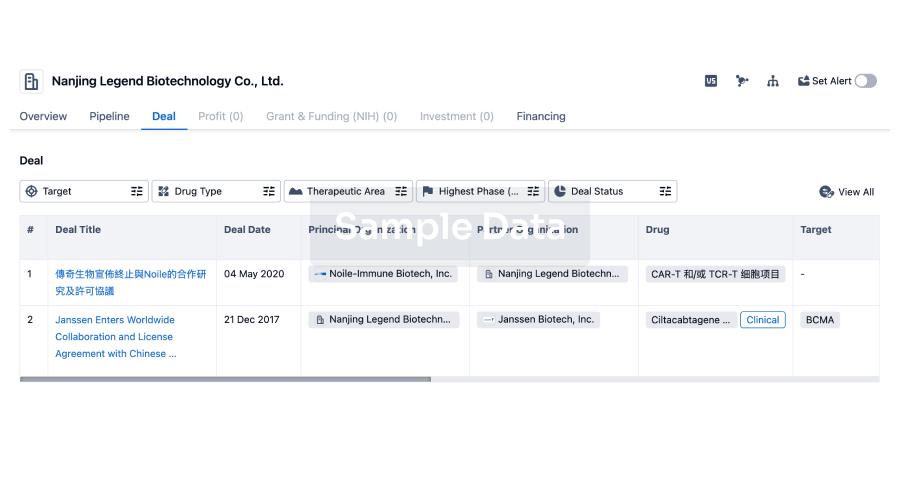
Translational Medicine
Boost your research with our translational medicine data.
login
or
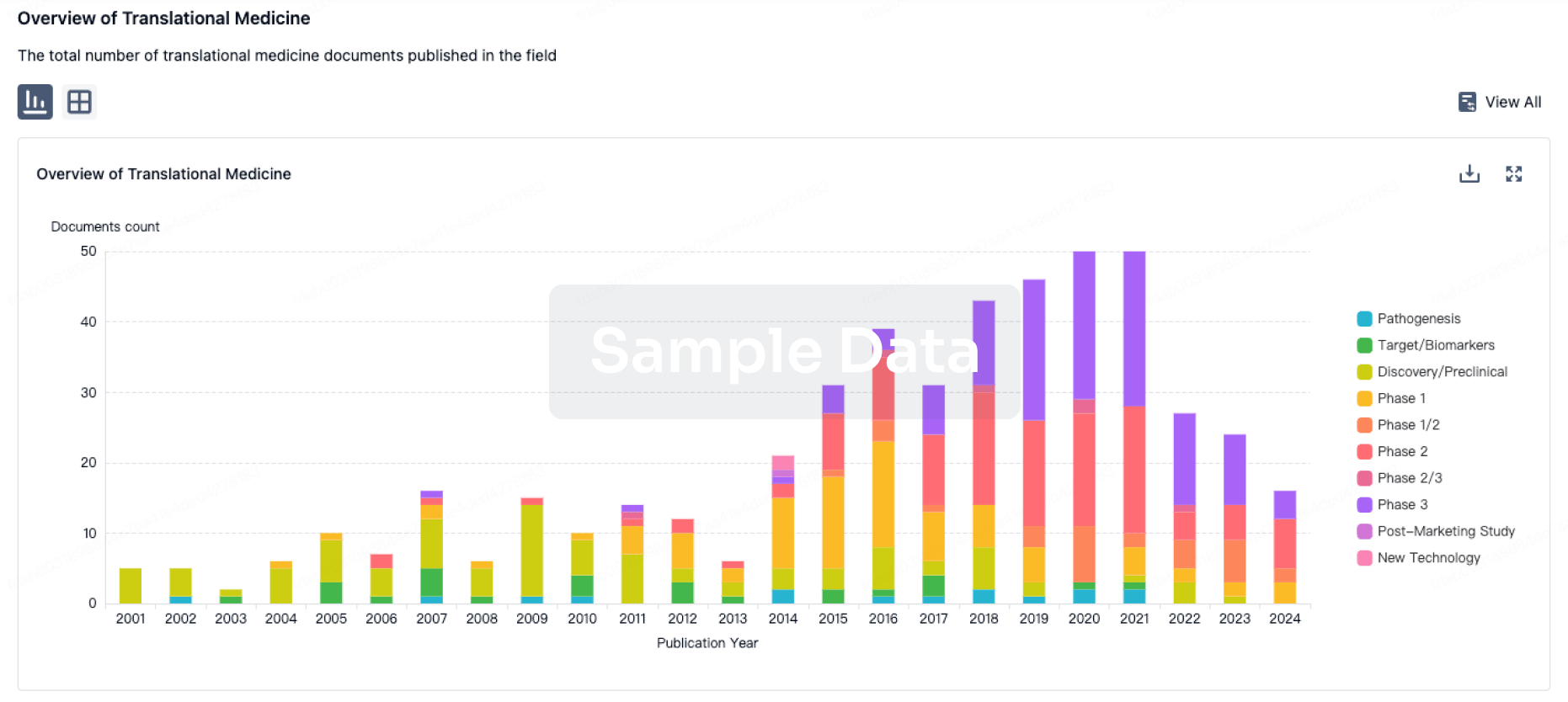
Profit
Explore the financial positions of over 360K organizations with Synapse.
login
or

Grant & Funding(NIH)
Access more than 2 million grant and funding information to elevate your research journey.
login
or
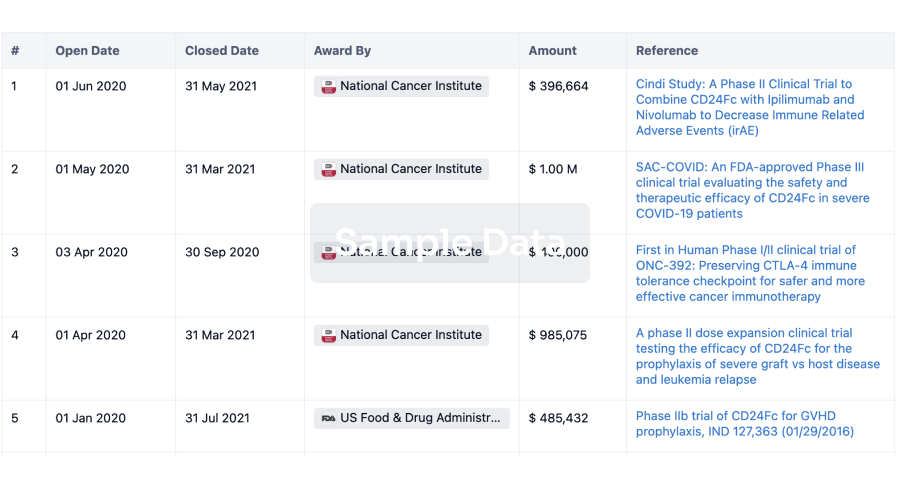
Investment
Gain insights on the latest company investments from start-ups to established corporations.
login
or
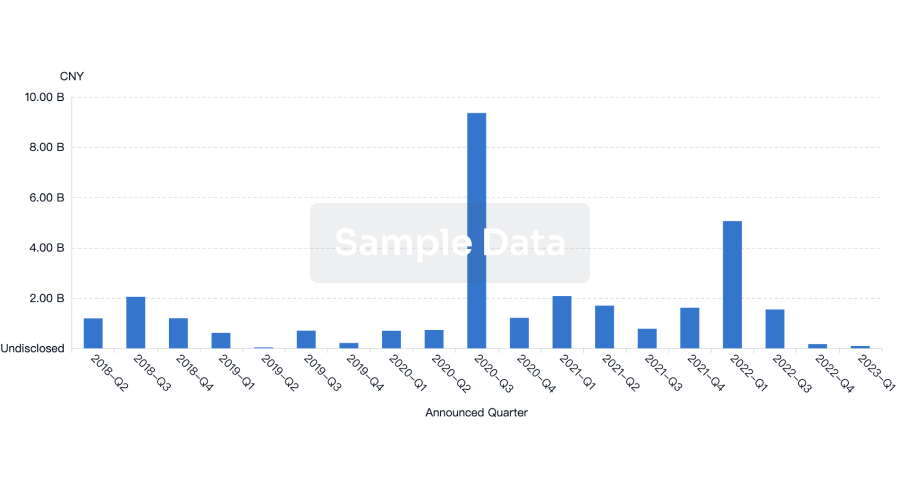
Financing
Unearth financing trends to validate and advance investment opportunities.
login
or
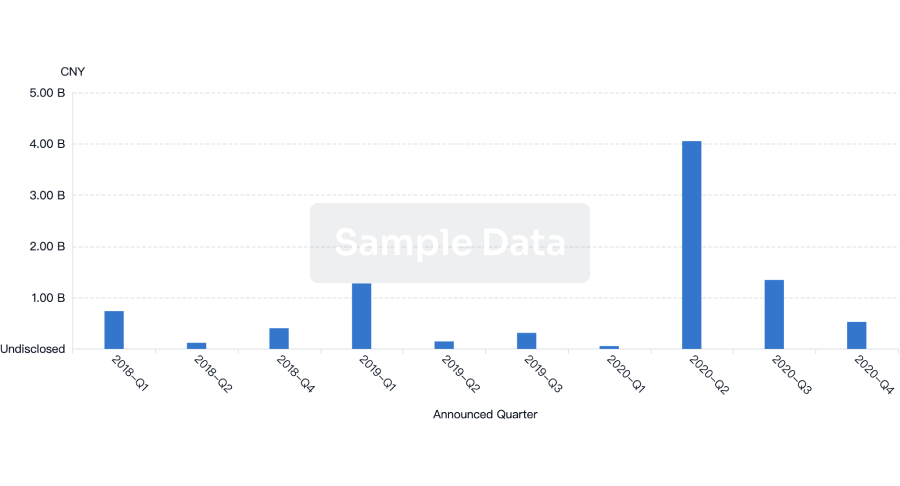
AI Agents Built for Biopharma Breakthroughs
Accelerate discovery. Empower decisions. Transform outcomes.
Get started for free today!
Accelerate Strategic R&D decision making with Synapse, PatSnap’s AI-powered Connected Innovation Intelligence Platform Built for Life Sciences Professionals.
Start your data trial now!
Synapse data is also accessible to external entities via APIs or data packages. Empower better decisions with the latest in pharmaceutical intelligence.
Bio
Bio Sequences Search & Analysis
Sign up for free
Chemical
Chemical Structures Search & Analysis
Sign up for free